“Coldwell’s work dispels, in the best possible way, any doubts and fears that might exist concerning ethics and copyright.. The hybrid form discussed here implies that human creativity guides the entire idea, and the use of artificial intelligence does not, in any way, eliminate the role of the artist.
Coldwell creates his works through a complex process of research, training or programming, selecting materials and information to “feed” the artificial intelligence… Due to the influence of the distant past, this substance evokes both curiosity and horror. The dreamlike scenes appear both real and surreal at once”
— Nina Todorovic, curator
/imagine Ronsack
These digital hallucinations of history were created using photographs and generative AI. Models trained on the artist’s own rephotographic montages, and other relevant fragments of time, were asked to imagine an ancient oak tree in Shropshire, UK - a silent witness to vast changes since the dawn of the Industrial Revolution.
The work was created in collaboration with Tom “Swansither” Kennedy, who wrote the music for the piece and devised the original concept for the work. The great tree lies on farmland where Kennedy lives, inspiring him to create soundscapes that evoked a haunting sense of deep time. He writes “I visit the tree often, and imagine it with ears and eyes, a witness to some 40 generations of humanity, the changing landscape, Civil war and, most importantly, the Industrial Revolution that began in Coalbrookdale, barely a stone's throw away, and changed the world forever.” Kennedy and Coldwell began working together on the project after Kennedy asked Coldwell to create a cover for the Ronsack album, based on his generative rephotography experiments.
Coldwell conducts research into time, hauntology and AI. In this new kind of image generation, ghosts are summoned by artificial intelligence from countless photographic fragments, into a kind of spectral goo, that Coldwell has recently dubbed “Vectoplasm” - a reference to Roland Barthes’ writing on the spectrality of the photograph. This new ghostly digital “substance” is comprised of many traces of a real past mixed together, but unlike traditional photography, completely reconfigures them into bizarre new forms. While these traces can no longer be used as historical evidence in this formation, their digital deconstruction and reconstruction, does allow us to visualise impossible perspectives on time, and find haunting patterns in the data. /imagine Ronsack is the best current visual representation of this new concept.
One of the key generative techniques used to animate /imagine Ronsack is frame interpolation, a method used to synthesise movement and the missing time between still frames. Usually this is used to tween between clearly related images in a motion sequence. However, the model was used in this work to imagine time completely missing from the source images.
Ronsack is the also the name of the time-travelling tree in question. Ronsack saw the very beginning of the industrial revolution – a 300 year process that would finally lead to artificial intelligence - and this very mirage of its memories.
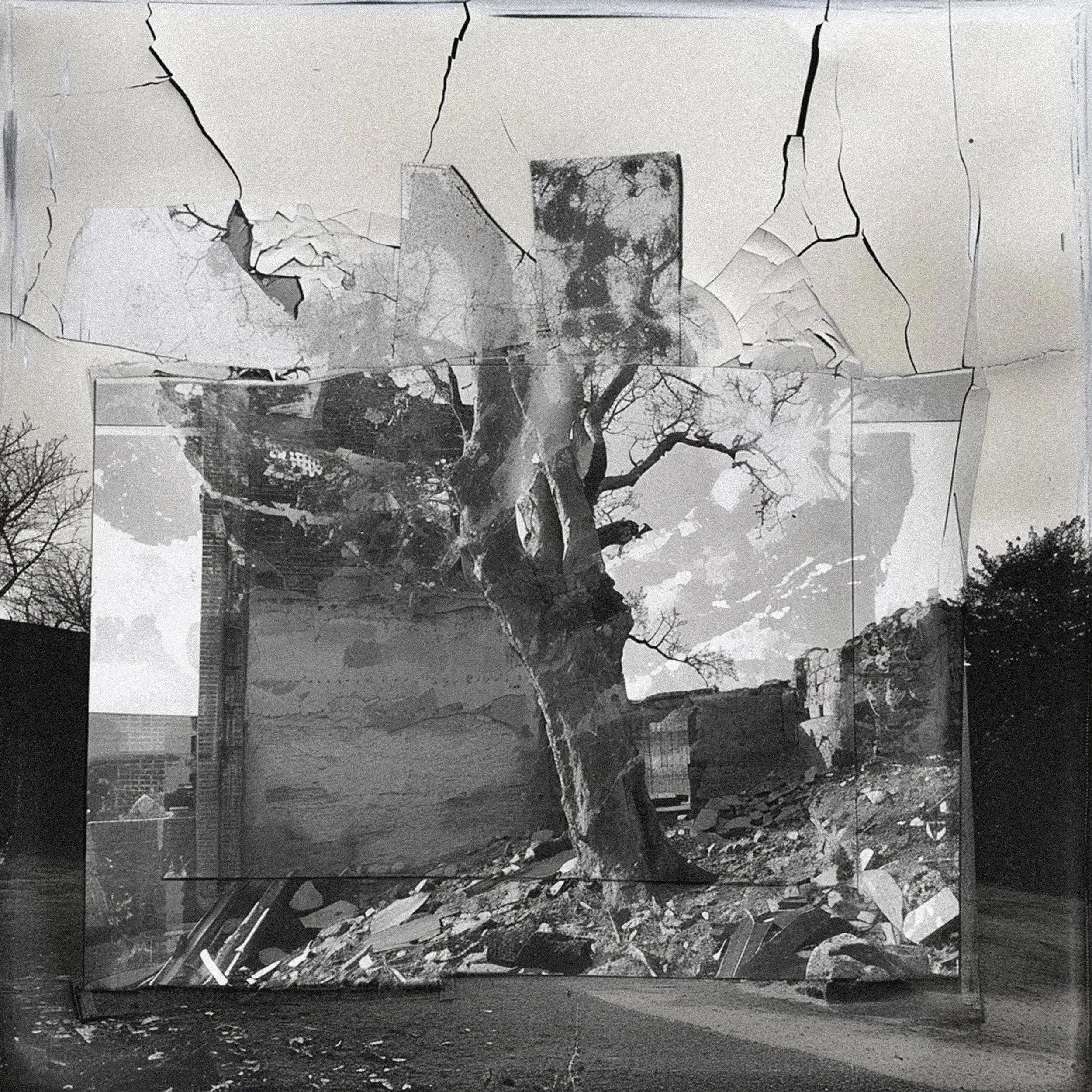
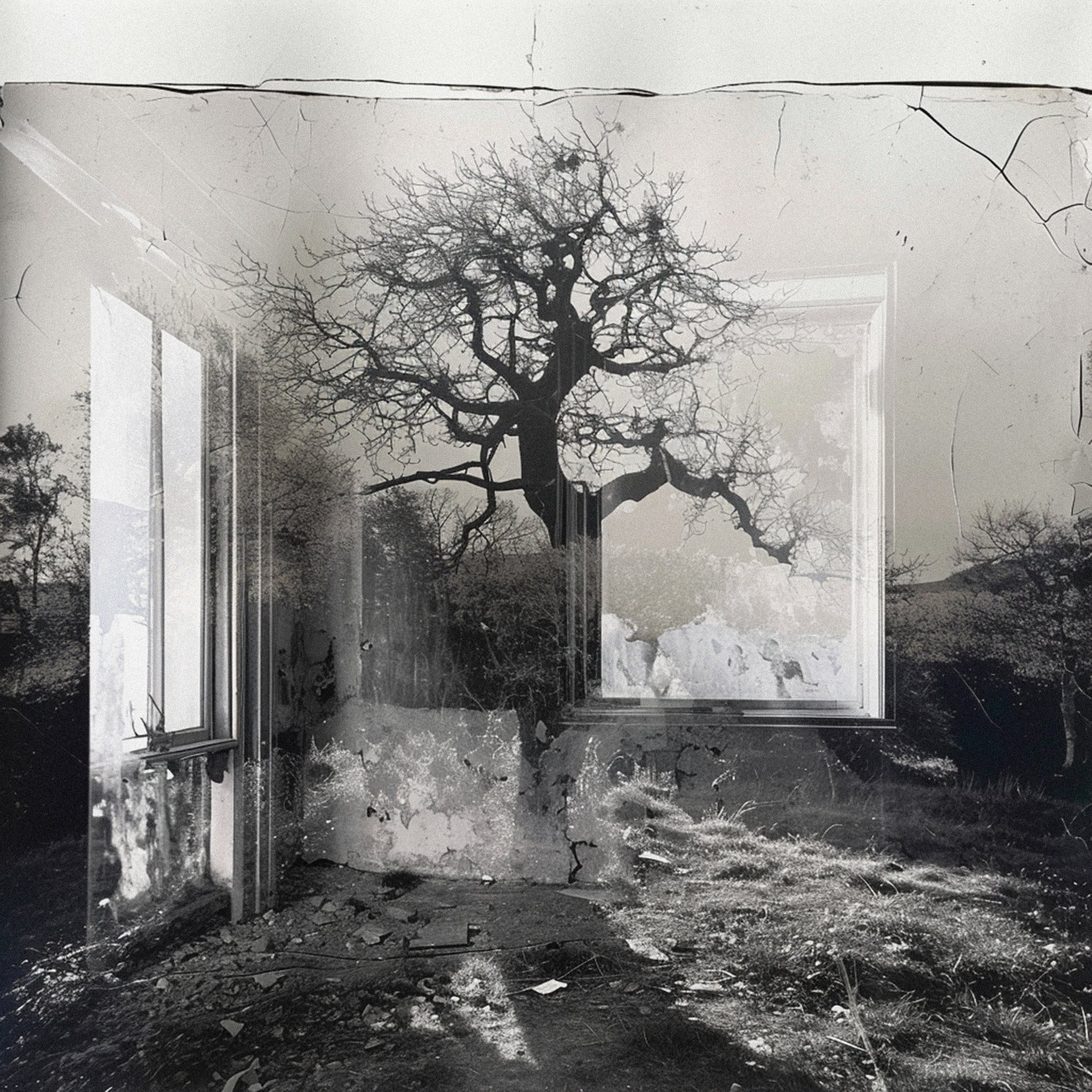
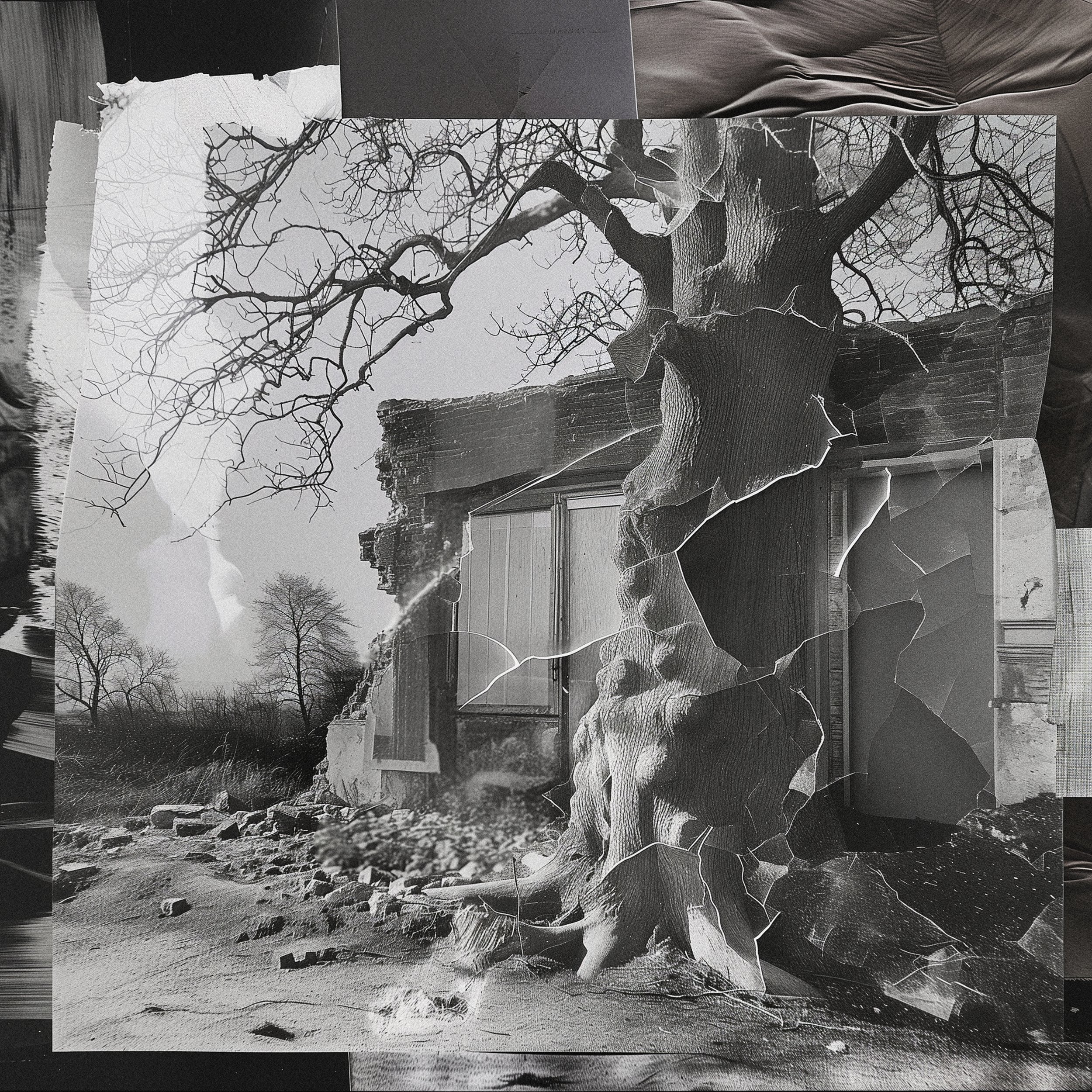
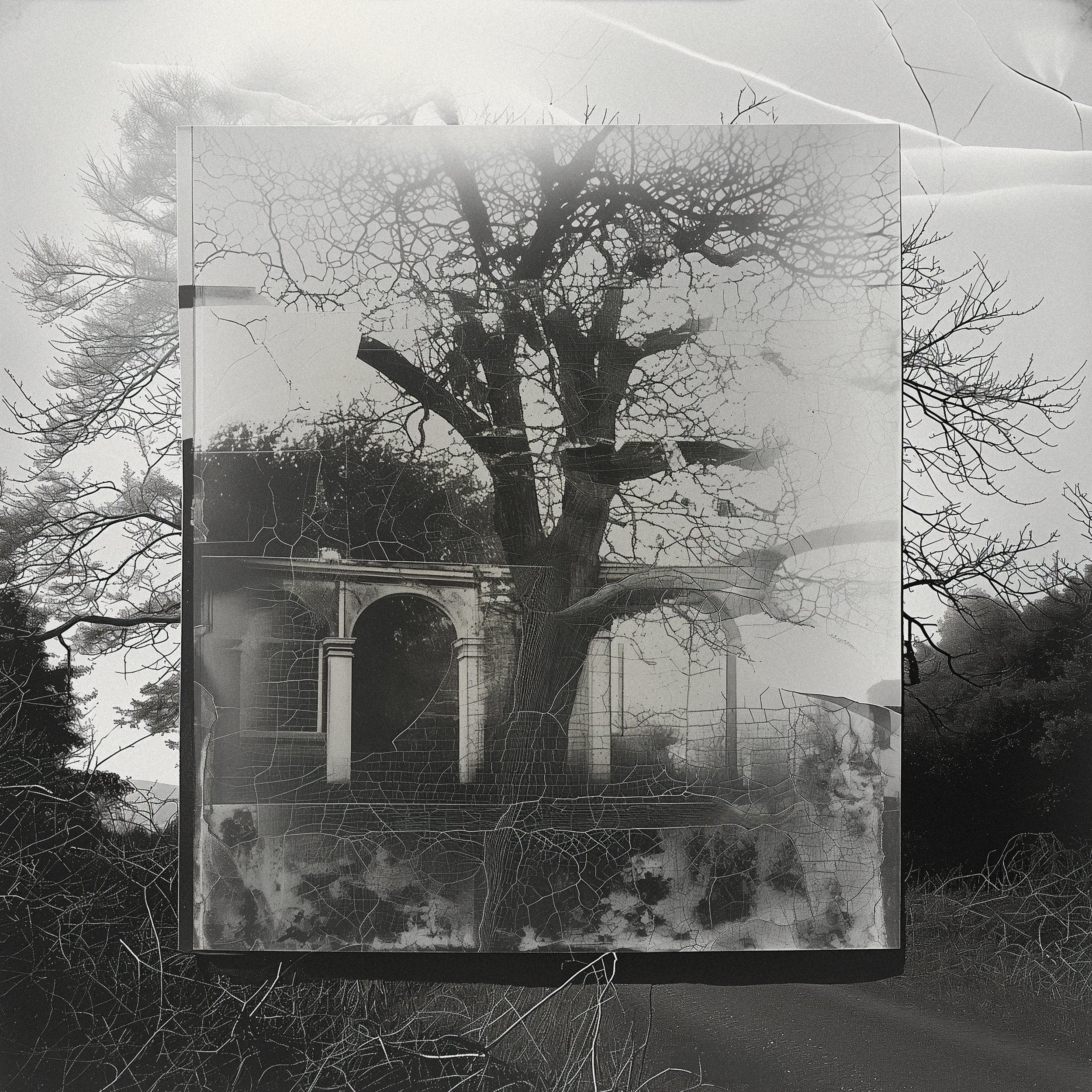
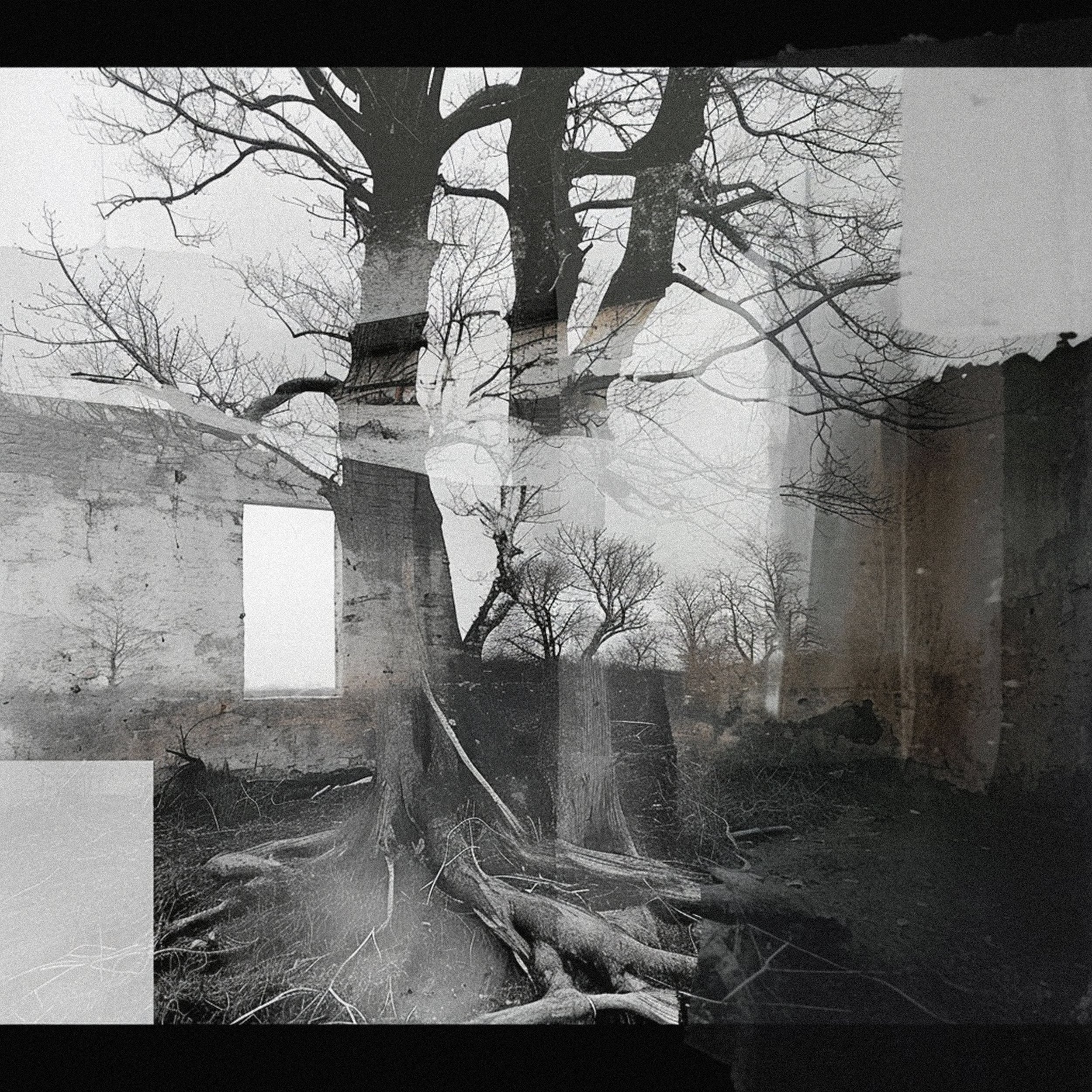
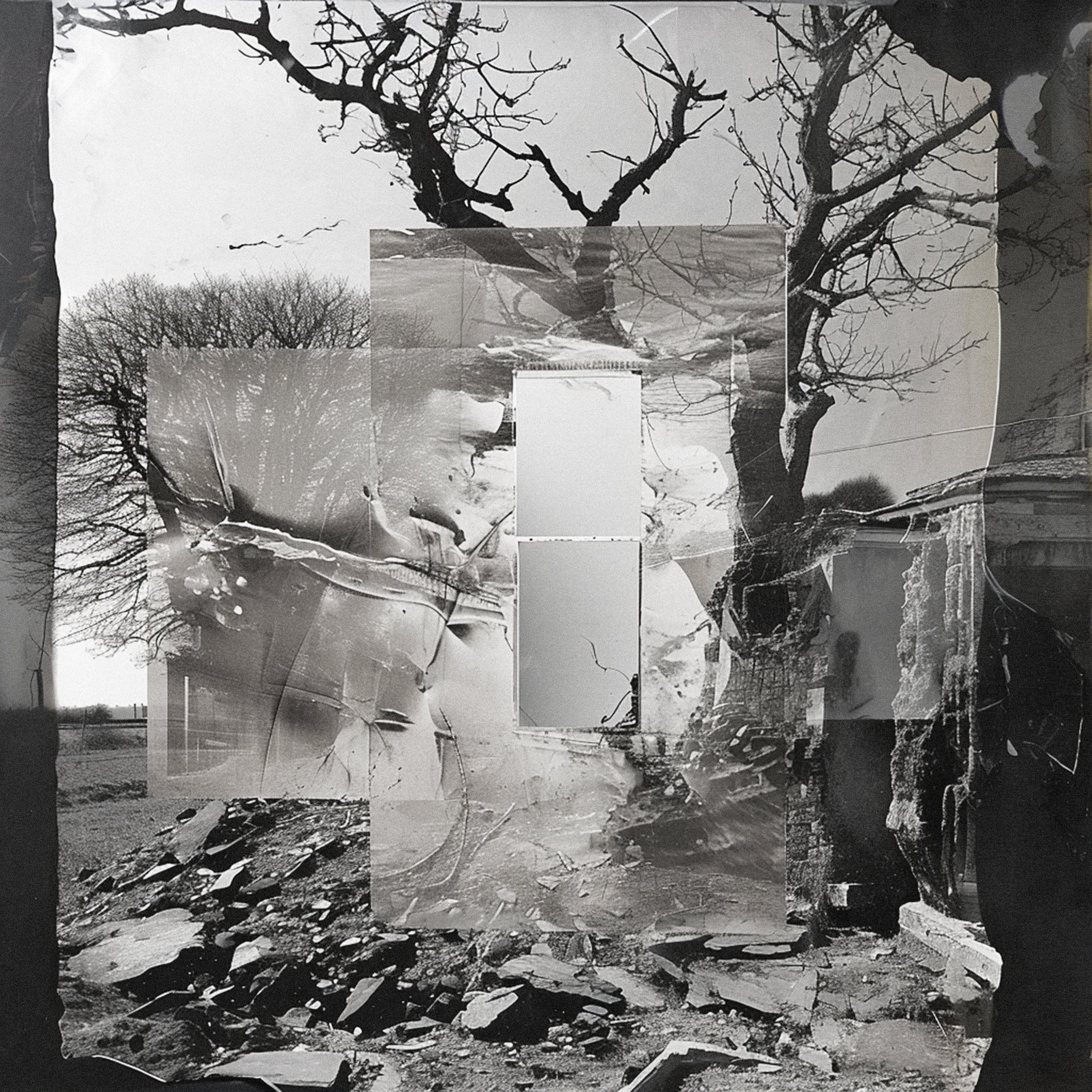
Fragmentation: Layering of Space and Time
/imagine Ronsack was installed as part of this exhibition in Pancevo, Serbia, 2 to 20 December 2024
XIX AAD / Art, Architecture, Design
FRAGMENTATION: LAYERING OF TIME AND SPACE
The Gallery of Contemporary Art Pančevo, Miloša Crnjanskog 2, Pančevo
